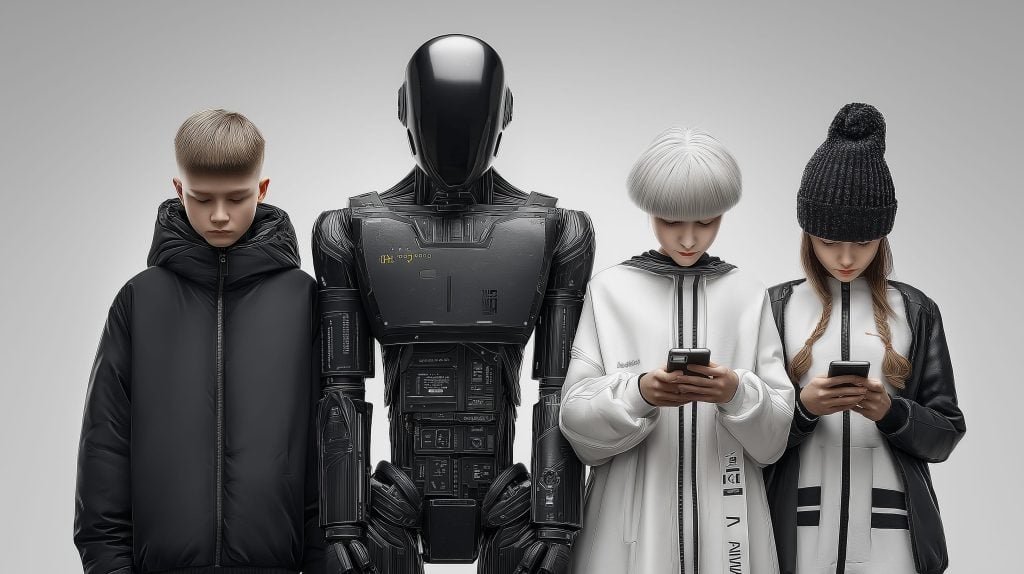- DeepSeek and Alibaba’s Tongyi Qianwen now rival top U.S. models in capability, and DeepSeek costs about $0.55 per million tokens versus roughly $15 for OpenAI.
- OpenAI’s ChatGPT has more than 910 million downloads, while DeepSeek has about 125 million.
- HSBC and Standard Chartered began testing DeepSeek, Saudi Aramco deployed it in its main data center, and Amazon, Microsoft, and Google now offer DeepSeek on their cloud platforms.
- DeepSeek was trained on Nvidia H800 GPUs, which were not blocked by export bans, yet its performance matches models trained on newer hardware.
- Alibaba’s Tongyi Qianwen was open-sourced, spawning over 100,000 variant models, and Abeja chose Qwen for a Japan Ministry of Economy project.
- Yann LeCun says open-source models are surpassing proprietary ones, a view echoed by Marc Andreessen praising DeepSeek R1 as an amazing breakthrough and a profound gift to the world.
- Microsoft plans to spend about $80 billion in 2025 to build out AI-enabled data centers.
- OpenAI’s Project Stargate aims to add 4.5 gigawatts of new cloud capacity dedicated to AI.
- China has launched over 2,600 AI micro-majors enrolling about 74,000 students.
- Guangxi’s Nanning was designated as a major AI industry cluster, with a China–ASEAN Artificial Intelligence Innovation Center launched in mid-2025 to foster collaboration.
Chinese AI Models Gain Global Traction
For years, the United States led the AI race, but 2025 is proving to be a turning point. Chinese artificial intelligence companies are rapidly rising and “undermining America’s dominance” in the field Bastillepost. Across Asia, the Middle East, Africa, and even Europe, organizations are increasingly switching from U.S. AI solutions to Chinese alternatives Bastillepost. Homegrown Chinese models like DeepSeek and Alibaba’s language model Tongyi Qianwen now rival Western offerings in capability – and they continue to advance despite U.S. export bans on high-end chips Bastillepost. By heavily investing in domestic semiconductor production, software development, and AI education, China has narrowed the performance gap with American AI models Bastillepost.
Major international companies are beginning to ditch U.S. AI models for Chinese alternatives like DeepSeek, drawn by similar performance at far lower cost. Bastillepost Chinese AI is no longer confined to China’s borders – it’s going global. In fact, Britain’s HSBC and Standard Chartered banks have internally begun testing DeepSeek’s AI models, and Saudi Aramco, the world’s largest oil producer, recently deployed DeepSeek in its main data center Bastillepost. (This is despite the White House banning some uses of DeepSeek over “data security” concerns.) Tellingly, major American cloud providers – Amazon, Microsoft, Google – now offer DeepSeek on their platforms for clients, indicating market demand often trumps political wariness Bastillepost.
One big reason for this shift is cost. Industry experts note that DeepSeek’s overall quality is on par with top U.S. models, but its price is a tiny fraction – roughly 1/17th the cost of leading U.S. AI services Bastillepost. “Competitors’ prices are 17 times higher,” said the co-founder of one global AI platform, noting DeepSeek is especially attractive to clients in places like Chile and Brazil that have limited budgets and computing capacity Bastillepost. In other words, Chinese AI is offering 90%+ of the performance for a few cents on the dollar, a game-changer for accessibility in developing markets. It’s no surprise adoption is accelerating in cost-sensitive sectors worldwide.
To be sure, American firms like OpenAI still hold lead positions – for now. OpenAI’s ChatGPT remains the world’s most popular AI platform with over 910 million downloads, compared to DeepSeek’s 125 million Bastillepost. But Chinese contenders are quickly closing the gap by focusing on practical, affordable solutions. Even U.S. tech leaders see the writing on the wall. “Whoever’s technology is most widely used globally will win this competition,” Microsoft President Brad Smith warned, emphasizing that the race will be decided by worldwide adoption Bastillepost. In other words, if Chinese AI becomes the go-to choice across large swaths of the globe, “whoever gets there first will be difficult to supplant” Bastillepost – a candid admission that America’s AI supremacy is no longer guaranteed.
Open-Source Strategy Fuels China’s AI Rise
A key factor behind China’s rapid AI ascent is its embrace of open-source development. Chinese AI companies routinely release their model architectures and code to the public, inviting developers around the world to modify, improve, and build upon them Bastillepost. This openness has made Chinese AI tools extremely attractive to a global developer community – particularly in emerging markets across Asia, Africa, and Latin America hungry for accessible AI solutions Bastillepost. By fostering a collaborative ecosystem, China’s AI firms have cultivated a robust base of contributors and users beyond their borders, eroding what was once a U.S. monopoly on advanced AI tech Bastillepost.
One striking example is Alibaba’s large language model Tongyi Qianwen (Qwen). Alibaba open-sourced Qwen’s code last year, and since then, over 100,000 variant models built on Qwen have sprung up globally Bastillepost. Developers everywhere have adapted Qwen to different languages and tasks. Notably, a Japanese AI startup (Abeja) chose Alibaba’s open-source Qwen – instead of similar models from Google or Meta – to develop a custom AI system for Japan’s Ministry of Economy Bastillepost. That decision underscores how an open Chinese model, freely adaptable to local needs, can beat out Western proprietary options even in a developed nation’s government project.
Open-source innovation is not only expanding China’s influence – it’s shifting the AI paradigm. As Meta’s chief AI scientist Yann LeCun pointed out, the rise of models like DeepSeek illustrates that “open source models are surpassing proprietary ones” Pymnts. DeepSeek itself “profited from open research and open source” by building on others’ publicly shared advances Pymnts. In contrast to OpenAI’s closed approach, DeepSeek invites global developers to contribute. This strategy “democratizes AI capabilities, fostering a more inclusive innovative ecosystem,” one industry consultant explained Pymnts. In short, China’s open-source gambit is leveling the playing field – and undercutting the U.S. companies that keep their AI locked behind APIs.
Crucially, open source goes hand-in-hand with low cost. By publishing its models freely on platforms like GitHub and Hugging Face, China ensures any developer can deploy them without paying hefty license fees Pymnts. Many Western models, by contrast, remain pay-to-play. The result? A global “AI commons” that benefits China’s standing. Even prominent Silicon Valley figures have praised this trend – venture capitalist Marc Andreessen hailed DeepSeek R1 as “one of the most amazing and impressive breakthroughs… and as open source, a profound gift to the world.” Pymnts For businesses, the appeal is tangible: DeepSeek charges about $0.55 per million tokens of output, versus around $15 per million tokens for OpenAI’s models Pymnts. That nearly 30× price difference means startups and non-profits can suddenly afford AI at scale, not just Big Tech with deep pockets. All told, China’s open-source, cost-first approach is accelerating the spread of its AI – and forcing U.S. firms to rethink the value of closed systems.
U.S. Tech Giants Double Down on AI Infrastructure
U.S. companies are pouring unprecedented investments into AI infrastructure, like OpenAI’s massive “Project Stargate” data center plan, to stay ahead in the AI arms race. ts2.tech Pymnts The race for AI dominance isn’t just about algorithms and software – it’s also a high-stakes battle of infrastructure. To maintain their edge, American tech giants are investing astronomical sums in the hardware and energy resources that power advanced AI. Microsoft, for example, is on track to spend approximately $80 billion in 2025 alone to build out AI-enabled data centers for training models and cloud services Datacenterdynamics. This represents a huge jump in capital spending (Microsoft’s data center capex was about $53 billion in 2023) and reflects the company’s conviction that more compute = more AI innovation Datacenterdynamics. Similarly, Meta (Facebook’s parent) is reportedly committing on the order of $60–70 billion to expand its AI computing infrastructure – from cutting-edge chips to large-scale server farms ts2.tech. These staggering investments show that U.S. firms are treating AI like an arms race, where winning requires the biggest “guns” (in this case, GPU clusters and cloud capacity).
Even with record spending, demand for AI compute is outpacing supply. Consider OpenAI: its viral products ChatGPT and GPT-4 have appetite for enormous processing power, beyond what Microsoft’s Azure alone can provide Datacenterdynamics. OpenAI has thus partnered with Oracle and other investors to launch “Project Stargate,” an initiative to add 4.5 gigawatts of new cloud capacity dedicated to AI ts2.tech. (For scale, 4.5 GW is like several nuclear power plants’ worth of electricity – all for AI.) This project is massive in cost: between $100 billion and $500 billion to build out next-gen data centers, according to reports Pymnts. The fact that half-a-trillion dollars is being considered for AI infrastructure underscores the unprecedented computing needs of frontier models – and how determined U.S. players are to meet those needs. As OpenAI CEO Sam Altman put it, “it is extremely hard to do something new, risky, and difficult” in AI, and the required resources are immense Pymnts. Silicon Valley seems willing to spend whatever it takes.
The push for hardware dominance is also a response to geopolitics. The U.S. government has imposed strict export controls to deny China access to the most advanced AI chips (like Nvidia’s A100/H100 GPUs) Pymnts. By concentrating compute power at home, American companies aim to maintain a technical edge even as their Chinese rivals innovate. However, this strategy has limits – and China is finding workarounds. Notably, DeepSeek managed to train its models on older Nvidia H800 chips (which weren’t blocked by export bans) and still achieved performance on par with models trained on the latest hardware Pymnts. This clever feat stunned many in the industry and suggests that sheer spending on infrastructure isn’t a guaranteed win if the opponent can out-engineer constraints. Nonetheless, U.S. tech giants clearly believe that scale is their advantage to lose. From multi-billion-dollar chip R&D to sprawling cloud complexes, they are fortifying an AI foundation that they hope China cannot easily match.
China Accelerates AI Self-Reliance and Talent Development
China is countering on a different front: building self-reliance and abundant talent to sustain its AI rise. In the face of U.S. sanctions, Beijing has doubled down on developing a completely autonomous AI ecosystem. This means huge investments into domestic chip manufacturing, alternative computing architectures, and cloud infrastructure – all aimed at reducing dependence on Western technology Bastillepost. Over the past few years, the Chinese government has funneled resources into homegrown GPU makers, and companies like Huawei and Alibaba have designed their own AI chips. New AI super-computing centers have been erected across China, from Beijing to Shenzhen. Thanks to these efforts, Chinese AI labs can continue to train large models even as access to cutting-edge U.S. silicon is restricted. Analysts note that this drive for tech independence has paid off: China’s top models are now roughly on the same tier as American ones for many tasks, a dramatic improvement from just a few years ago Bastillepost. In short, China is ensuring it controls the “supply chain” of AI progress – from hardware to software – so that its momentum cannot be easily stalled from abroad.
In parallel, China is addressing the human capital needed for an AI-powered economy. Acknowledging a shortage of skilled AI engineers and researchers, the Ministry of Education launched a nationwide initiative to expand AI-focused education. Universities across China have introduced specialized “micro-majors” in artificial intelligence and related high-tech fields to boost graduates’ job skills Sina. As of this year, over 2,600 such AI micro-majors have been set up, enrolling about 74,000 students in new courses ranging from machine learning to robotics Sina. These condensed programs, often developed in partnership with tech companies, aim to produce industry-ready AI talent with practical skills. Beyond universities, China is also rolling out vocational training programs to reskill workers for AI and automation roles ts2.tech. The idea is to create a deep talent bench that can fill the ranks of AI startups, staff new research labs, and implement AI solutions in traditional industries. By greatly enlarging its pool of AI experts, China seeks to secure a long-term advantage in innovation capacity – an area where the U.S. has historically led due to its strong university system and immigration of global talent.
China’s strategy also involves building regional AI hubs to spur innovation and collaboration. A prime example is the southwestern region of Guangxi, where the provincial capital Nanning has been designated as a major AI industry cluster with an eye toward Southeast Asia. The government has established a new China–ASEAN Artificial Intelligence Innovation Center in Nanning, envisioning it as a bridge for AI cooperation between China and the ASEAN countries ts2.tech. The center – launched in mid-2025 – provides R&D labs, an “AI factory” computing facility, and startup incubation space Sina Sina. Local officials have rolled out a package of pro-AI policies, including rent subsidies, grants, and tax breaks, to attract companies and researchers to Nanning Sina Sina. Uniquely, many of these incentives specifically target partners from ASEAN nations: for example, offering “double support” in funding and housing for teams coming from Southeast Asia Sina. The goal is to make Nanning a “first stop” for ASEAN tech talent and firms collaborating with China, effectively turning Guangxi into a gateway for exporting Chinese AI to the broader Asia-Pacific region Sina Sina. Similar AI clusters and pilot zones are being promoted in other provinces as well, each focusing on niche strengths (from smart manufacturing in the Pearl River Delta to autonomous vehicles in Hubei). By decentralizing AI development into regional hubs, China ensures that innovation isn’t confined to Beijing or Shanghai – it’s a nationwide push, integrated with economic diplomacy (such as the Belt and Road Initiative) to spread Chinese AI influence globally.
Key Takeaways
- Chinese AI models have become credible global alternatives to U.S. offerings, seeing rapid adoption from Asia to the Middle East and Europe. Once America’s monopoly, cutting-edge AI is now a multipolar arena Bastillepost Bastillepost.
- Open-source and cost-effective strategies are expanding China’s influence. By sharing its AI technology (and pricing it far below competitors), China has galvanized a worldwide developer ecosystem and made AI accessible to nations and businesses with limited resources Bastillepost Bastillepost.
- Infrastructure investment is the new battleground. Both U.S. and Chinese players are racing to build the data centers, chips, talent pools, and industry clusters that form the backbone of the AI era ts2.tech ts2.tech. The winner of the global AI race will be decided not just by clever algorithms, but by who can deploy them at scale across the world.




